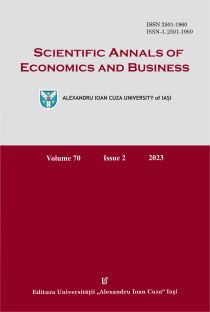The Effectiveness of the Huber's Weight on Dispersion and Tuning Constant: A Simulation Study
The Effectiveness of the Huber's Weight on Dispersion and Tuning Constant: A Simulation Study
Author(s): Intan Martina Md Ghani, Hanafi A. RahimSubject(s): Economy, ICT Information and Communications Technologies, Socio-Economic Research
Published by: Editura Universităţii »Alexandru Ioan Cuza« din Iaşi
Keywords: dispersion; tuning constant; Huber; generalized autoregressive conditional heteroscedasticity; additive outliers;
Summary/Abstract: Dispersion measurement and tuning constants are critical aspects of a model's robustness and efficiency. However, in the presence of outliers, the standard deviation is not a reliable measure of dispersion in Huber's weight. This research aimed to assess the efficacy of the Huber weight function in terms of dispersion measurement and tuning constant. The simulation study was conducted on a hybrid of the autoregressive (AR) model and the generalized autoregressive conditional heteroscedasticity (GARCH) model with 10% and 20% additive outlier contamination. In the simulation analysis, three dispersion measurements were compared: median absolute deviation (MAD), interquartile range (IQR), and IQR/3, with two tuning constant values (1.345 and 1.5). The numerical simulation results showed that during contamination with 10% and 20% additive outliers, the IQR/3 outperformed the MAD and IQR. Our findings also showed that IQR/3 is a potentially more robust dispersion measurement in Huber's weight. The tuning constant of 1.5 revealed a decrease in resistance to outliers and increased efficiency. The proposed IQR/3 model with a constant tuning value (h) of 1.5 outperformed the AR(1)-GARCH(1,2) model while minimising the effect of additive outliers.
Journal: Scientific Annals of Economics and Business
- Issue Year: 70/2023
- Issue No: 2
- Page Range: 221-234
- Page Count: 14
- Language: English

